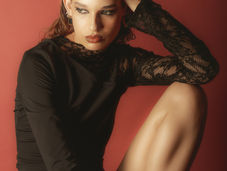Terence Conran – Mary Quant: “Swinging London: A Lifestyle Revolution” Review - Fashion and Textile
- Maggie Mahoney
- Feb 8, 2019
- 3 min read
8 February – 2 June 2019
Adult £9.00
Concession £8.00
Student £7.00
Implied by its title Swinging London, the new exhibition at The Fashion and Textile Museum frames fashion as acting as a pendulum: continually shifting, yet returning in cycles to past influences. However, it would be remiss to say that the exhibit reflects only evolutions in clothing style; rather, it reveals much deeper changes in people’s approaches to living following the Second World War.
The installation focuses on a group of radical innovators, designers, artists, and photographers, referred to as the Chelsea Set and their work during the period from 1952 to 1977. Their social activities centred around the King’s Road, create a community and artistic hub in central Chelsea. These artists embodied the disruptive energy that emerged following the war. They redefined the status quo and youth culture in London at the time. Some of such influential thinkers included: Mary Quant, Terence Conran, and Bernard and Laura Ashley.

Upon entering, visitors are sure to feel transported back in time to an earlier London, surrounded by vibrant, retro clothing and homeware on display. The work of each designer in the exhibition shows incredible attention to garment construction from selecting the fabric to designing the textiles, sewing the patterns, and distribution. You will find that the museum guides dress equally as well to the mannequins on display; they pay homage to designers like Mary Quant with their bright, bold-patterned clothing and structured coats.
Mary Quant, finding a few clothes she and her friends wanted to wear during the 1950s, took to creating her own. Her early work is famous for its sophistication and 20s-inspired, loose silhouettes such as the drop-waist to give the body freedom of movement. She was influenced by designers such as Chanel and Balenciaga, however, as her career progressed, she became known for ahead-of-the-game, avant-garde fashion. Quant is often associated with the mini skirt, brightly coloured tights, and pieces inspired by psychedelic vibes and “British Invasion” of the 1960s.
Quant not only shook up the clothing world but also dramatically impacted the way in which people shopped, as well as their approach to everyday life. Her first store: Bazaar, that opened in 1955 and subversively critiqued the British retail establishment, revolutionized the fashion scene. She later collaborated with JC Penny in the 1960s to bring her clothing to a wider audience and promote accessibility. In response to perceived customer demand, Quant even created her own makeup line for the average young woman, a rare feat for a designer at the time. The line was famous for its beautifully crafted packaging and quirky names such as “Vamps” for a pair of false lashes. Quant makeup still is in production today and is highly popular in Japan.
Terence Conran was another notable figure of the Chelsea Set for slightly different reasons. He was a textile designer, inspired by names like Eduardo Paolozzi, who served as one of the early founders of what we now label “lifestyle.” Conran had a modernist and stripped-back style with regard to his furniture designs and a contrasting splashy, pop-culture approach to textile. He was inspired by France and its informally styled shopping scene during the 1950s, which he incorporated into his own London stores. In 1964, he launched Habitat, a retail experience which was revolutionary in bringing the stacked-shelves and the “serve yourself” shopping, that we have today, to London.
Besides Quant and Conran’s work, interspersed throughout the exhibit, you will find culturally significant items from other disruptive thinkers. For example, Elizabeth David’s A Book of Mediterranean Food, published in 1950, shook up the British culinary scene. Bernard and Laura Ashley’s mark on print and textile is also not to be forgotten, embodied in their highly popular line of tea towels and aprons with Victorian imagery and later rural-life-inspired clothing.
Rounding out the exhibit, visitors are bound to feel contemplative of the ways in which this explosive period shaped our modern industries and consumer culture. Although the designs of Mary Quant and Terence Conran may no longer be in mass circulation, their influence echoes in the way we shop, dress, and live to this day. Swinging London will leave you informed, reflective, and scanning people’s outfits on the street for the rest of the day.
Edited by Dimitrina Dyakova
























Comments